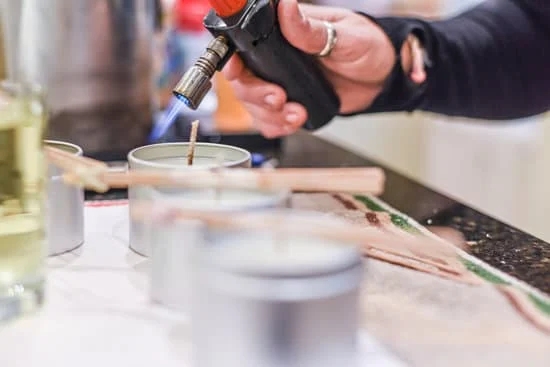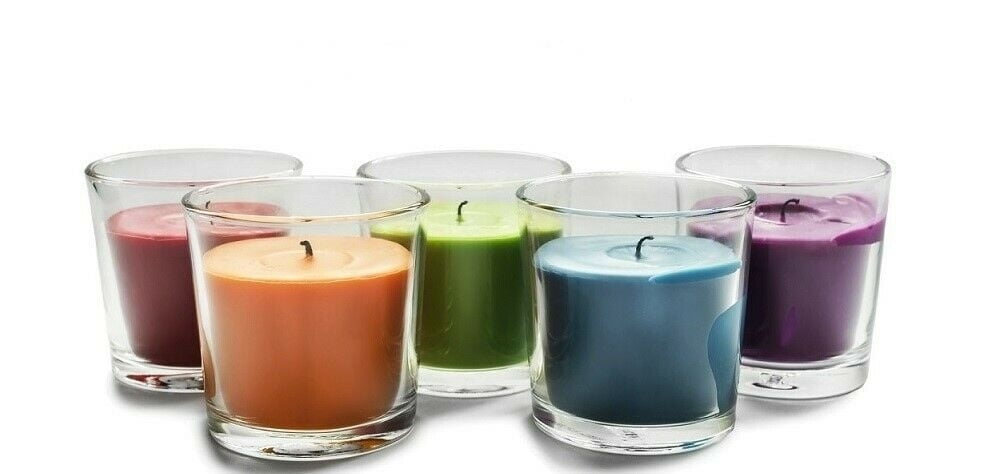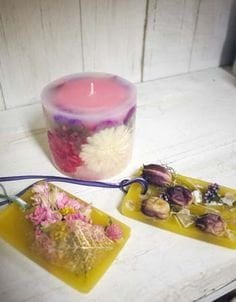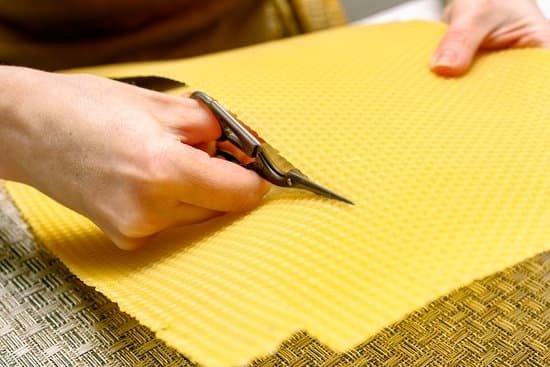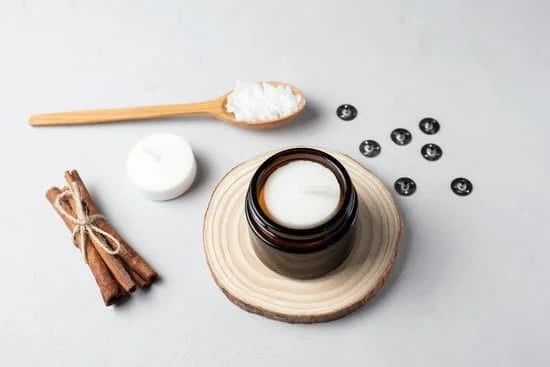Interested in adding a personal touch to your home? Look no further than DIY scented candle making. There’s something so special about creating your own candles with unique scents that you hand-pick yourself. Not only is it a fun and creative activity, but it also allows you to customize the ambiance of your space. In this article, we’ll guide you through the art of scented candle making, from selecting the right materials to troubleshooting common issues.
When it comes to creating scented candles, the possibilities are endless. Whether you prefer a subtle floral fragrance or a cozy vanilla scent, DIY candle making allows you to tailor your candles to suit your preferences. With the right tools, materials, and essential oils, you can embark on a rewarding journey of crafting beautiful, fragrant candles that are perfect for gifting or simply enjoying in your own home.
In the following sections, we will provide you with all the information you need to get started on your DIY scented candle making adventure. From choosing the right wax and selecting the perfect fragrances to adding personal touches and ensuring safety precautions, we’ve got you covered. Get ready to unleash your creativity and embrace the art of homemade candle making.
Choosing the Right Wax
When it comes to DIY scented candle making, choosing the right wax is crucial for creating beautiful and fragrant candles. There are several options available for candle wax, each with its own unique qualities and benefits. One of the most popular choices is soy wax, which is derived from soybean oil and known for its clean and long-lasting burn.
Another common option is paraffin wax, which is easy to work with and provides a strong scent throw. Beeswax is another natural option that offers a subtle honey-like aroma and a warm, golden color.
In addition to these popular waxes, there are also specialty waxes such as palm wax, coconut wax, and gel wax that can be used to create unique textures and effects in your candles. Each type of wax has its own melting point, fragrance absorption rate, and burn characteristics, so it’s important to consider these factors when choosing the right wax for your DIY scented candle making project.
| Wax Type | Key Qualities |
|---|---|
| Soy Wax | Clean burn, long-lasting, eco-friendly |
| Paraffin Wax | Easy to work with, strong scent throw |
| Beeswax | Natural aroma, warm color |
As you explore the world of DIY scented candle making, consider experimenting with different types of waxes to see which ones best suit your preferences and creative vision. Whether you’re looking for eco-friendly options or unique textures and colors, the right choice of wax can elevate your homemade candles to a whole new level.
Essential Oils and Fragrances
When it comes to DIY scented candle making, one of the most important decisions you’ll make is choosing the right fragrances for your candles. The scents you select will not only determine the overall ambiance of the space where your candle will be used, but they also play a crucial role in creating a lasting impression on anyone who experiences your homemade creation.
To ensure that you select the perfect scents for your candles, it’s essential to consider the preferences of your target audience. If you’re making candles as gifts or for sale, think about what fragrances are popular or trending. If you’re making them for yourself, think about what scents bring you comfort and joy.
Another key factor to keep in mind when selecting fragrances for your DIY scented candle making is the strength and quality of the essential oils or fragrance oils you use. Not all oils are created equal, and some may not provide the long-lasting scent throw you desire. Be sure to choose high-quality oils from reputable suppliers to ensure that your candles fill their surroundings with delightful aromas every time they’re lit.
To help with your selection process, here is a list of popular essential oils and fragrance oils commonly used in diy scented candle making:
- Lavender
- Vanilla
- Eucalyptus
- Sandalwood
- Rose
- Lemon
- Cinnamon
By considering these tips and choices in mind, you can feel confident in selecting enjoyable and long-lasting fragrances for your homemade candles.
Tools and Materials
When venturing into the world of DIY scented candle making, it’s essential to have all the necessary tools and materials on hand to ensure a successful and enjoyable experience. Here is a comprehensive list of supplies needed for candle making:
Wax
The type of wax you choose will greatly impact the quality and scent throw of your candles. Some popular options include soy wax, beeswax, paraffin wax, and coconut wax. Each type of wax has its own unique characteristics, so be sure to research and select the one that best fits your preferences and needs.
Wicks
Choosing the right wick is crucial for a clean and efficient burn. Wicks come in various sizes and materials, such as cotton or wood. It’s important to match the appropriate wick size with the diameter of your candle container to ensure an even burn.
Fragrances
Essential oils and fragrance oils are the key ingredients for creating delightful scents in your homemade candles. From soothing lavender to invigorating citrus, there are endless options to customize your candles with enticing aromas. Ensure that you use high-quality fragrance oils specifically designed for candle making.
Containers
Selecting suitable containers for your candles is imperative for both aesthetic appeal and safety. You can choose from glass jars, tins, or ceramic vessels in various shapes and sizes to accommodate your preferred style.
Additional Tools
Other essential supplies include a double boiler or melting pot for melting wax, a thermometer to monitor temperatures, a pouring pitcher for easy transfer of melted wax, stirring utensils, molds (if not using containers), and labels for personalizing and branding your finished products.
By having these tools and materials readily available before starting your DIY scented candle making endeavor, you’ll set yourself up for an enjoyable and seamless crafting experience while achieving professional-quality results.
Step-by-Step Guide
Gathering Your Materials
Before you start your DIY scented candle making project, it’s essential to gather all the necessary materials and tools. This includes wax, wicks, containers, a double boiler or melting pitcher, a thermometer, fragrance oils or essential oils, and any desired candle dyes or colorants. Make sure to also have a workspace that is well-ventilated and free from any flammable materials.
Melting the Wax
The first step in making scented candles at home is melting the wax. You can use either soy wax, beeswax, paraffin wax or a blend of waxes depending on your preference. Using a double boiler or melting pitcher over low heat, melt the wax to the recommended temperature according to the type of wax you are using. It’s important to keep an eye on the temperature to avoid overheating the wax.
Adding Fragrance and Pouring
Once the wax has reached the correct temperature, it’s time to add your chosen fragrance oil or essential oil. The amount of scent you use will depend on personal preference and the type of wax being used. Stir gently for even distribution of the fragrance throughout the melted wax.
Then carefully pour the scented wax into your chosen container with a pre-tabbed wick in place. Ensure that the wick is centered before the wax starts to cool and solidify.
Following these steps will ensure that you have created beautiful homemade scented candles that are perfect for relaxation and enjoyment. Whether you’re making them for yourself or as gifts for loved ones, DIY scented candle making can be a rewarding and creative hobby for anyone willing to put in some time and effort.
Troubleshooting Common Issues
Making scented candles at home can be a rewarding and enjoyable hobby, but it does come with its own set of challenges. Understanding how to troubleshoot common issues that may arise during the candle-making process is essential for creating high-quality, fragrant candles. Here are some tips to help you overcome potential challenges in your DIY scented candle making.
One common issue in DIY scented candle making is tunneling, which occurs when the wick burns straight down and leaves a ring of wax around the edges of the container. To prevent tunneling, ensure that you allow your candle to burn long enough on the first use so that the wax melts all the way to the edges of the container. This will help create an even burn and prevent tunneling in future uses.
Another issue that may arise is frosting, which appears as a white, powdery film on the surface of the candle. While this doesn’t affect the quality of the candle or its scent, it can affect its appearance. To minimize frosting, try pouring your wax at a slightly higher temperature and cooling it slowly. You can also try using a heat gun to smooth out any frosting that may have formed on the surface of your candles.
Lastly, uneven burning can be a common problem in homemade scented candles. This occurs when one side of the candle burns faster than the other, resulting in uneven wax levels.
To prevent this issue, always ensure that you trim your wick to 1/4 inch before each use and keep an eye on any drafts or air currents that may affect the burning pattern. By addressing these common issues and applying these troubleshooting tips, you can enhance your skills in DIY scented candle making and create beautiful, fragrant candles at home.
Adding Personal Touches
When it comes to diy scented candle making, the fun doesn’t stop at simply creating the candles themselves. Adding personal touches and creative decorations to your homemade candles can take them to the next level and make them truly unique. Here are some creative ideas for customizing and decorating your diy scented candles:
- Embedding botanicals: Consider adding dried flowers, herbs, or even citrus peels into your candle wax before it hardens. This not only adds a beautiful visual element to your candles but can also release subtle scents as the candle burns.
- Personalized labels: Create custom labels for your candles with personalized messages, quotes, or even hand-drawn designs. This adds a personal touch and makes your candles perfect for gifting to friends and family.
- Unique containers: Instead of using traditional glass jars, consider using vintage tea cups, mason jars, or even seashells to pour your candle wax into. The container itself can become a part of the overall aesthetic of the candle.
These are just a few ideas to get you started on customizing and decorating your diy scented candles. Feel free to let your creativity run wild and experiment with different materials, colors, and techniques to make each candle truly one-of-a-kind.
Remember that safety is always important when decorating candles, so be mindful of any flammable materials you use and ensure that they are placed in such a way that they do not pose a fire hazard when the candle is lit.
Safety Precautions
Scented candles are a popular and enjoyable DIY project, but it’s important to prioritize safety when making them at home. By taking some simple precautions, you can ensure that your candle making experience is both safe and enjoyable.
First and foremost, always work in a well-ventilated area. This will help to prevent the build-up of fumes from the melting wax and fragrance oils. Additionally, be sure to keep all flammable materials, such as paper towels and fabric scraps, away from your work area. It’s also important to have a fire extinguisher on hand in case of emergencies.
When working with hot wax, it’s crucial to use caution to avoid burns. Always wear heat-resistant gloves and consider using long-handled utensils to stir the wax and mix in fragrances. Keep a bowl of cold water nearby in case of accidental spills or splatters.
Lastly, never leave melting wax unattended. It’s easy for things to go wrong when dealing with hot materials, so stay present and focused throughout the entire candle making process.
| Safety Precaution | Tips |
|---|---|
| Work Area | Well-ventilated area; Keep flammable materials away |
| Handling Hot Wax | Use heat-resistant gloves; Keep cold water nearby |
| Supervision | Never leave melting wax unattended |
Conclusion
In conclusion, the art of DIY scented candle making is a rewarding and enjoyable hobby that allows individuals to express their creativity and personal style. From selecting the right wax to choosing the perfect essential oils and fragrances, every step in the process offers an opportunity for personalization and experimentation. With the right tools and materials, along with a comprehensive understanding of the process, anyone can create beautiful, customized candles at home.
Moreover, DIY scented candle making also provides a unique way to add ambiance and personality to any space. Whether you’re looking to create a relaxing atmosphere in your home or searching for the perfect handmade gift for a loved one, homemade scented candles offer endless possibilities. By adding personal touches and creative decorations, each candle becomes a unique work of art that reflects individual taste and style.
In addition to being a fun and fulfilling activity, it’s important to note that safety precautions should always be taken when making candles at home. By following proper guidelines and using caution when working with hot wax and fragrance oils, DIY candle making can be both safe and enjoyable.
Ultimately, embracing the art of DIY scented candle making opens up a world of potential for creativity, self-expression, and creating beautiful homemade products that can be enjoyed by oneself or given as thoughtful gifts to others.
Frequently Asked Questions
How Do You Make Strong Scented Candles at Home?
Making strong scented candles at home requires using high-quality fragrance oils or essential oils in a higher concentration than usual. This will ensure that the scent is potent and long-lasting when the candle is burned.
What Ingredients Do You Need to Make a Scented Candle?
The key ingredients needed to make a scented candle include wax (soy, paraffin, or beeswax), fragrance oils or essential oils, wicks, dye (optional), a heat source for melting the wax (like a double boiler), and a container for the candle.
What Can I Put in Homemade Scents for Candles?
When making homemade scents for candles, you can add various natural elements such as dried flowers, herbs, citrus peels, spices, or even coffee beans to enhance the fragrance of the candle. These additions can infuse the candle with unique and pleasant aromas.

Welcome to my candle making blog! In this blog, I will be sharing my tips and tricks for making candles. I will also be sharing some of my favorite recipes.

